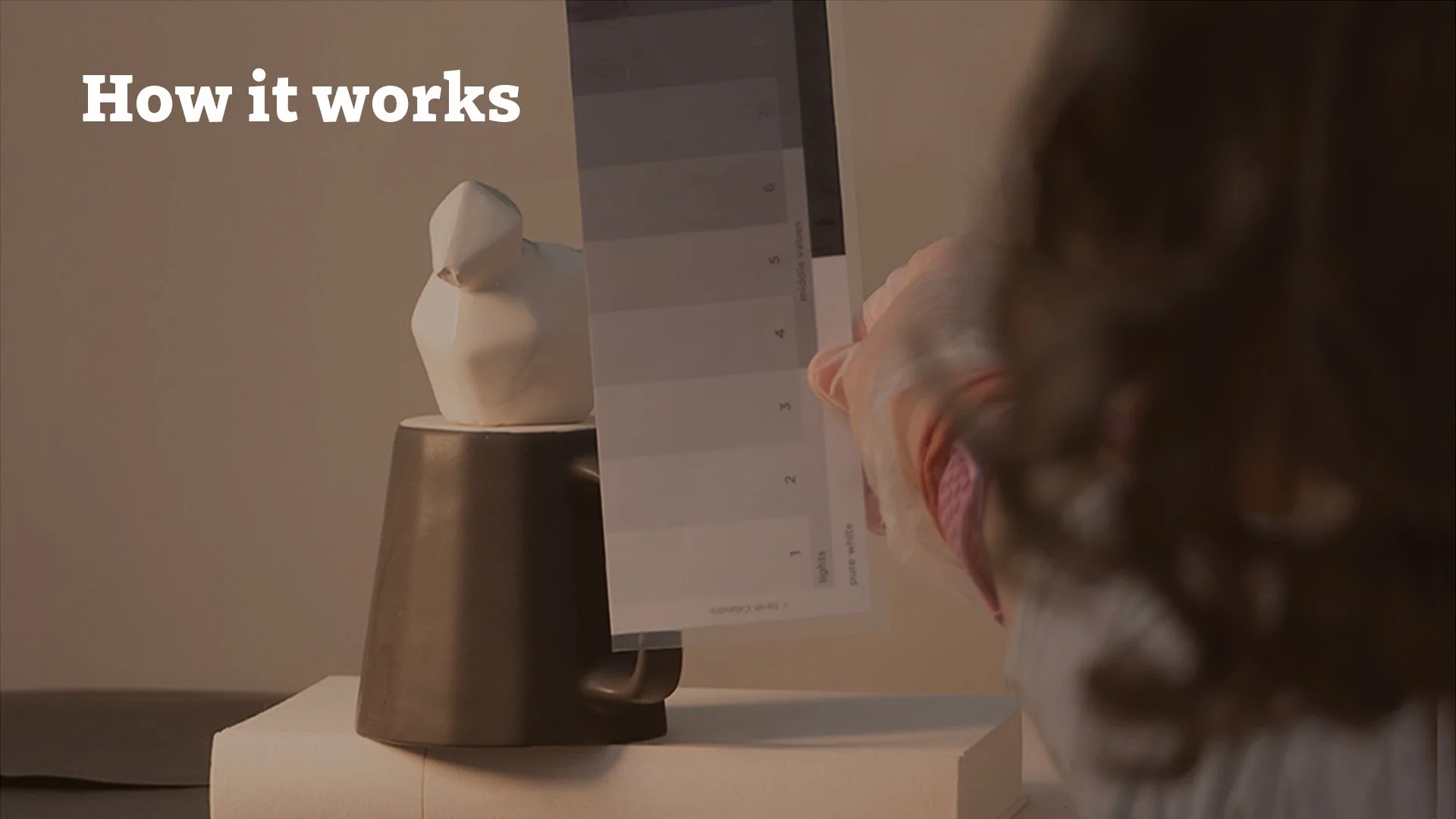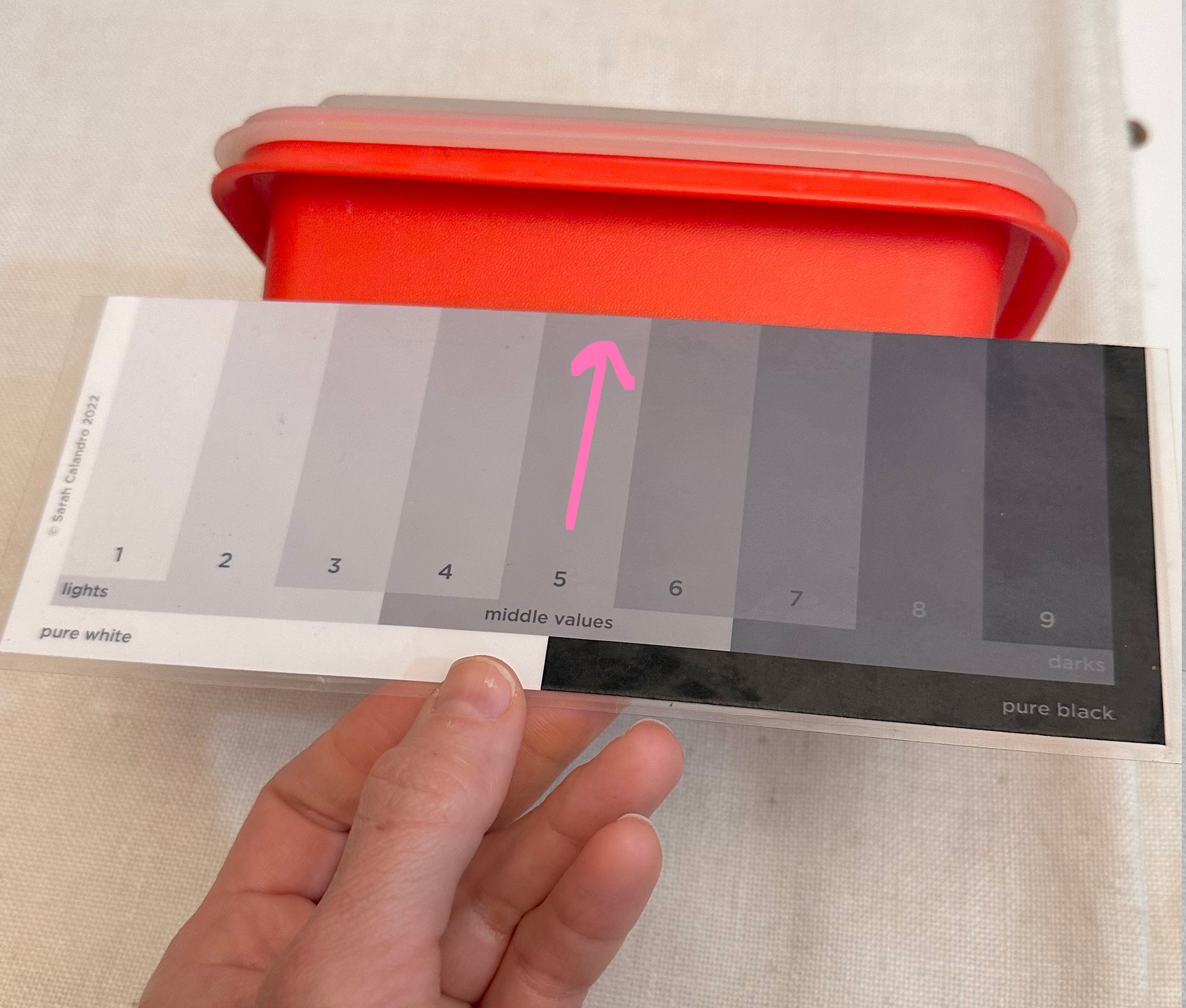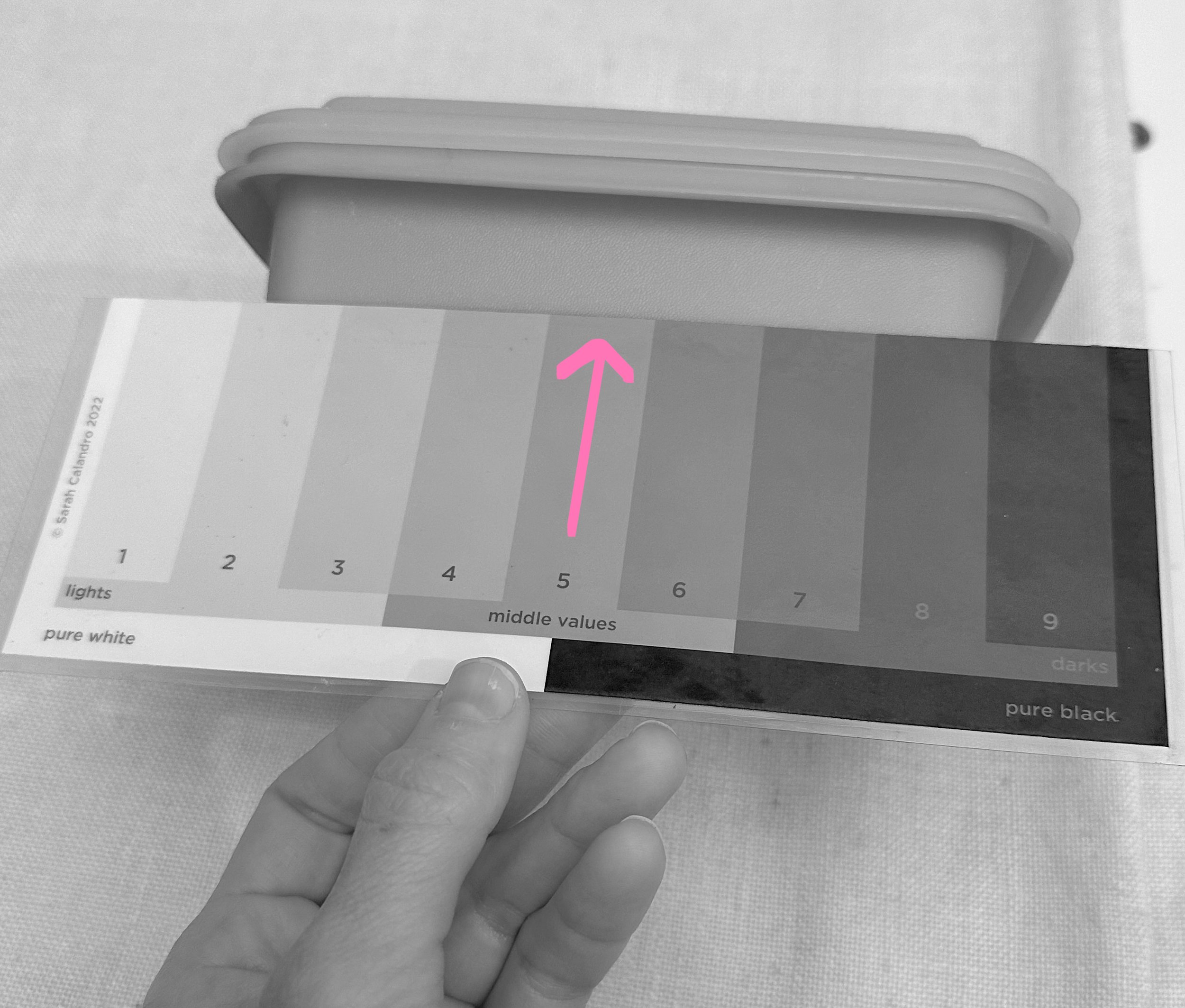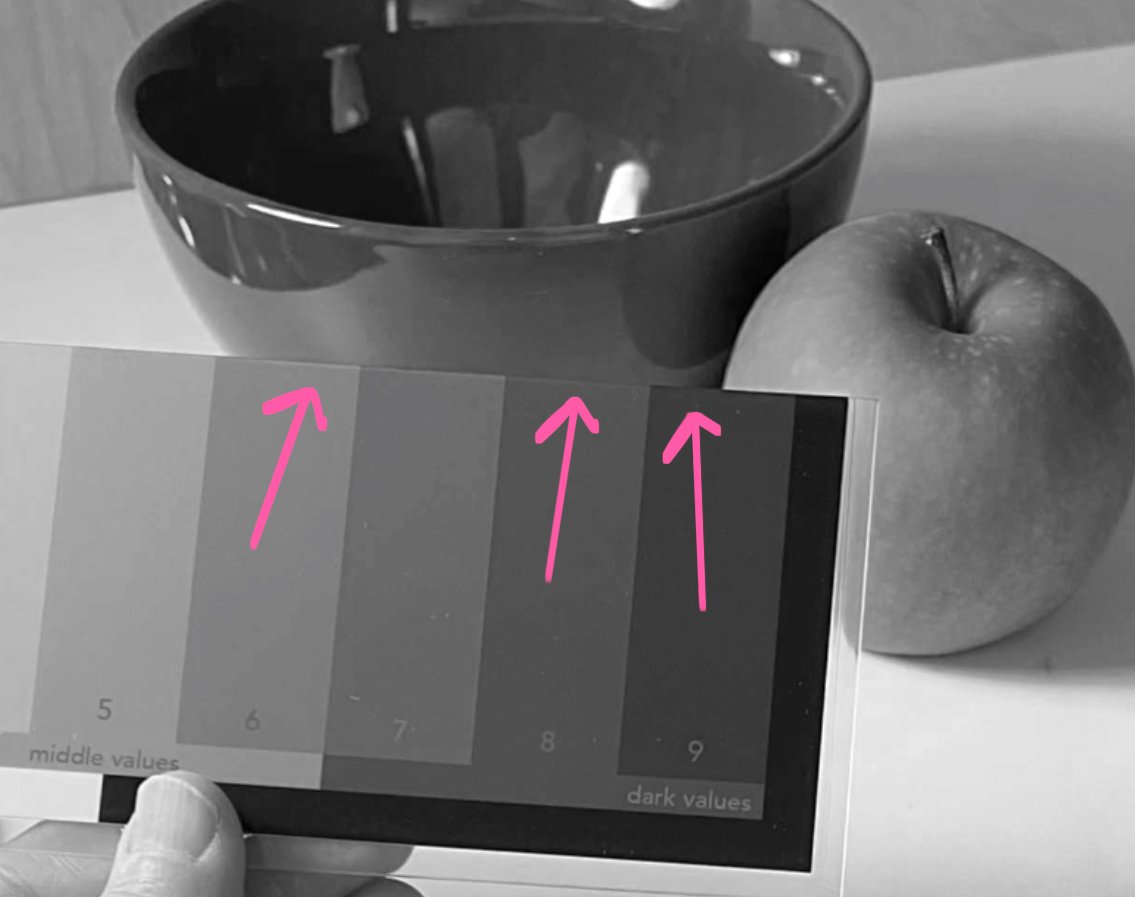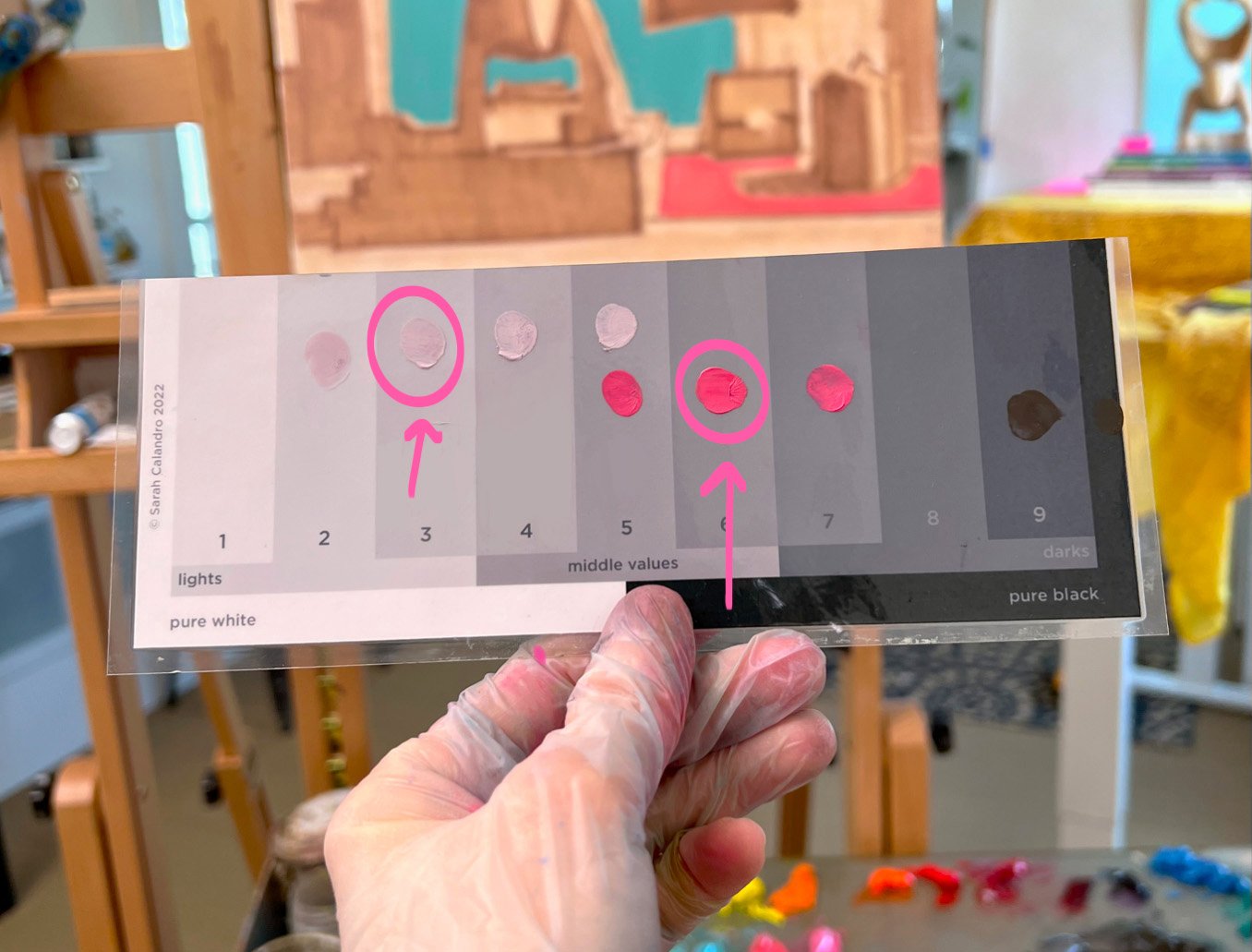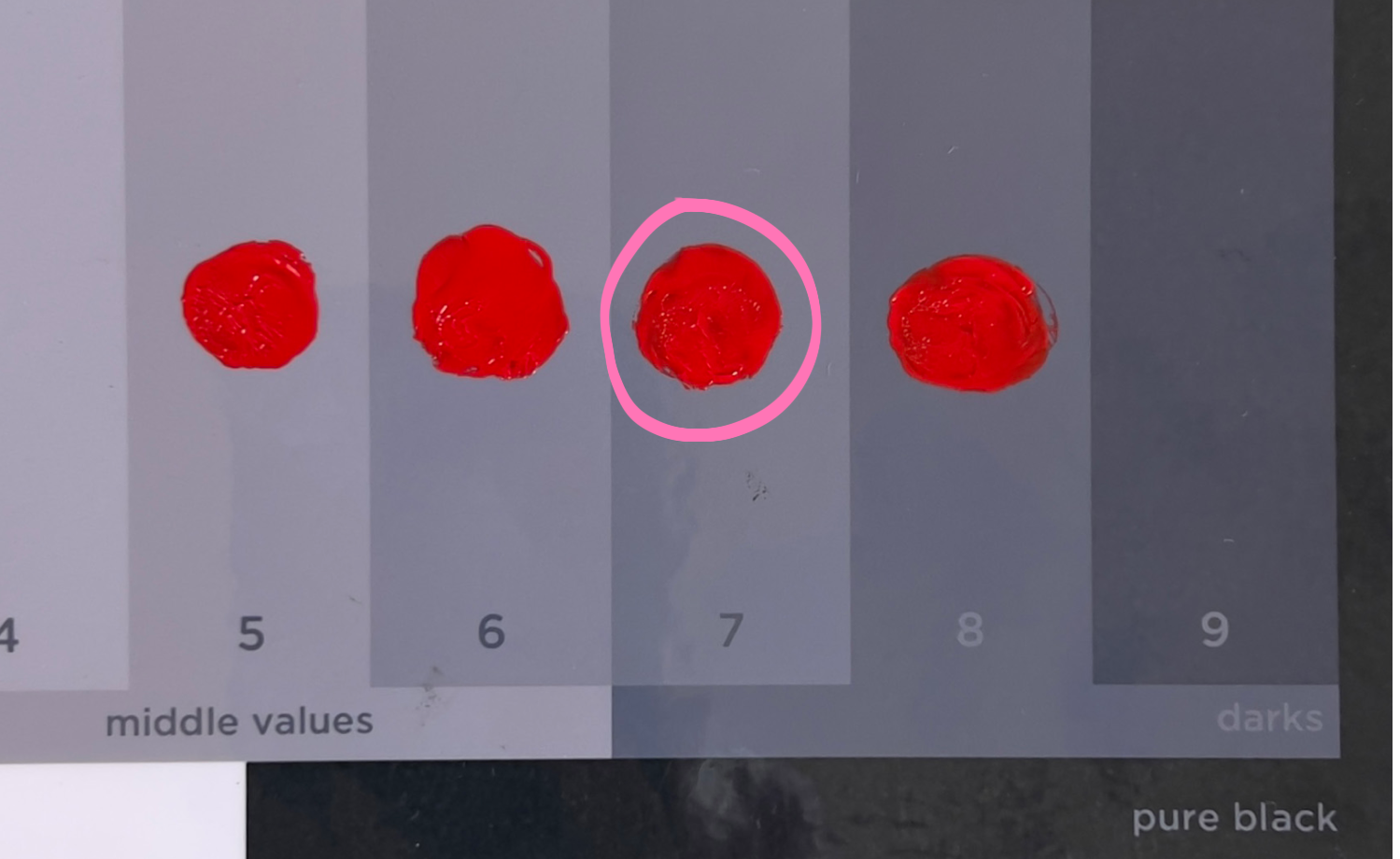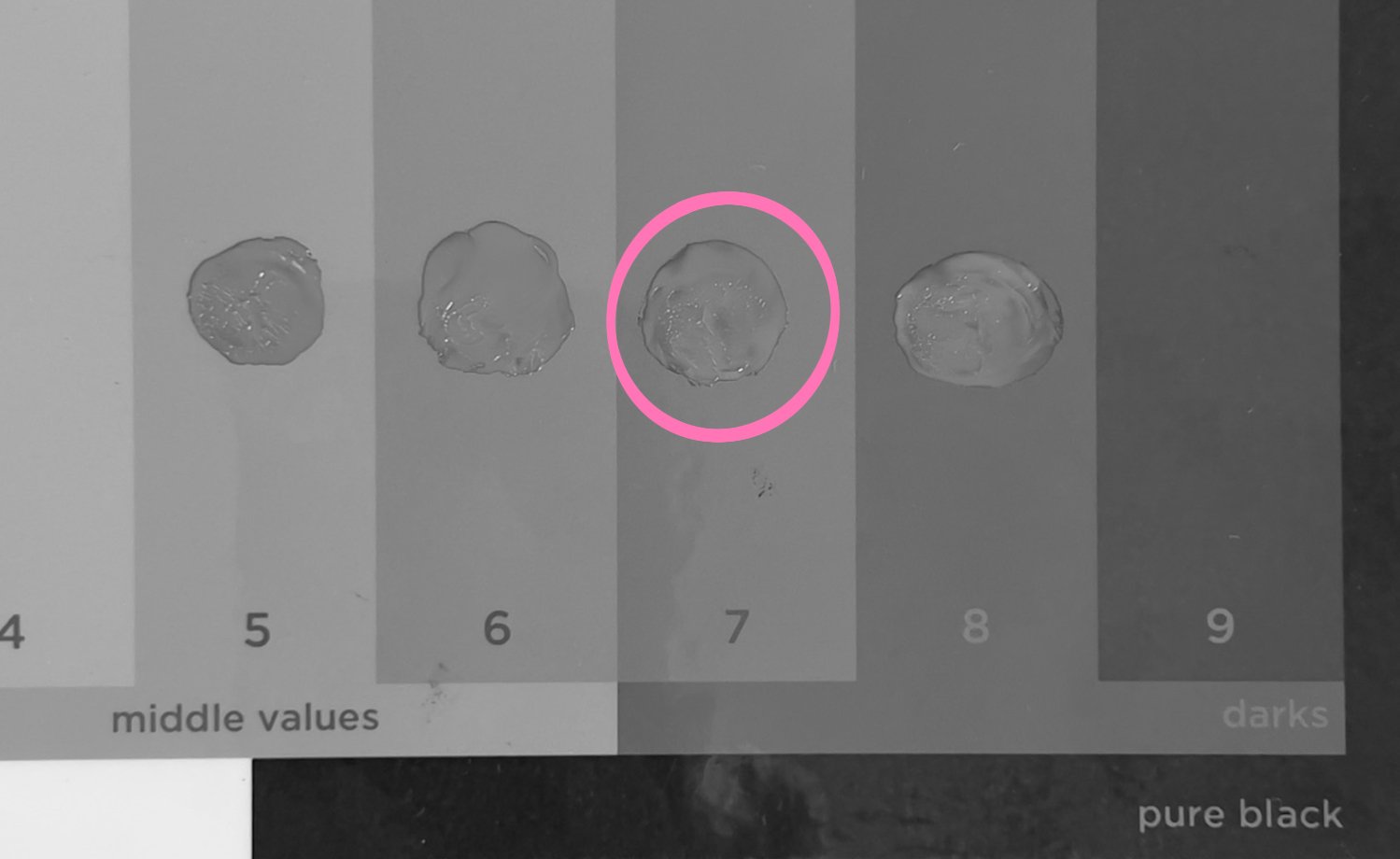How it works
Why values are so important
Values refer to the lightness or darkness of the things you see in relation to each other. They help you make sense of your environment and the things within it. If you strip away the color — like, when you make a photo black and white — you can still understand the image because of value.
Left: painting in color, Right: same painting with desaturated color
How the Value Card helps
For most artists, value skills don’t come naturally and take time and effort to master. The Value Card makes it easier because it gives you a reliable reference to judge the values of your subject and check the values of your paint.
It visualizes a complete spectrum of values — from pure white to pure black with 9 equal steps between. Each value step is exactly 10% darker than the previous: level 0 is 0% black, level 1 is 10% black, level 2 is 20% black, and so on and so forth until level 10 which is 100% black.
Regular practice helps train your eye to develop an intuitive sense of value, where eventually, you likely won’t need the card at all.
Value card steps
Identify the values of your subject
Move your card into the same lighting as your subject. Hold the top edge of the card up to a shape of color within your subject and squint. The value level where the edge of the card “disappears” indicates the value of the shape.
It takes time to train your eye to see this disappearing edge, especially for subjects with saturated colors. If you’re not seeing it, try taking a photo with your smartphone and desaturating it to see the disappearing edge more easily.
Check the values of your paint
Mix your paint until it seems like the correct value. Apply a dot onto the card and squint while looking at it. If the edges of the paint seem to disappear into the card, that means you mixed the correct value. If they don’t, apply the paint to adjacent value numbers until it disappears. Then adjust the value of your paint accordingly.
If the color of your paint is very saturated and you’re struggling to find the disappearing edge, try taking a photo with your smartphone and desaturating it to see the disappearing edge more easily.
What students say
“I have tried to challenge myself and for the first time, I enjoyed working with values.”
“I’ve studied light and shade and had many classes but until you told me to hold [it] up to my subject… I now realize I’ve never seen value or even understood the concept … [doing this] is a game changer. I can now finally see shapes and ... determine the value of those shapes.”
